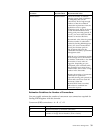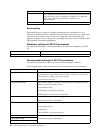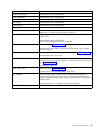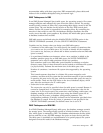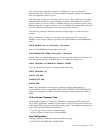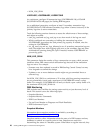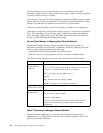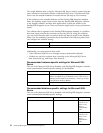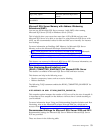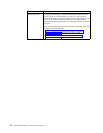You cannot enable automatic storage for a database if it was not created to
accommodate for it. Similarly, you cannot disable automatic storage for a database
that was originally created to use it.
With automatic storage, you no longer need to worry about tasks such as creating
additional table spaces for capacity, adding containers, and monitoring container
growth. When you want to restore a database backup, on a different system (using
different directory or path structures), you can redefine the storage paths, such that
the new paths are used instead of the ones stored in the backup.
The following examples illustrate automatic storage usage on UNIX and Linux
systems.
When a database is created, you can specify the storage pool for use by the
database. If no storage paths are specified, the default database path (dftdbpath) is
used.
CREATE DATABASE test on /data/path1, /data/path2
You can add additional storage paths to the pool:
ALTER DATABASE ADD STORAGE /data/path3, /data/path4
Earlier, when you created tablespaces, you had to specify containers for them. You
can now specify that they automatically use the database storage pool:
CREATE TABLESPACE ts1 MANAGED BY AUTOMATIC STORAGE
You can also define policies for storage growth and limits:
CREATE TABLESPACE ts2
INITIAL SIZE 500K
INCREASE SIZE 100K
MAXSIZE 100M
Note: For performance and simplicity, Automatic Storage Management is
recommended. If this is not possible, define SYSCATSPACE and SYSTOOLSPACE,
temporary tablespaces as SMS, and other tablespaces holding application data as
DMS.
I/O Sub-System Response Time
Sterling B2B Integrator is an On-Line Transaction Processing (OLTP) application.
As an OLTP application, database response time to the I/O sub-system needs to be
in the single digit range even during the peak periods. The database response time
to the I/O sub-system should be less than:
v 5 ms for logs. 1ms or better is recommended.
v 10 ms or better for data. 5ms is recommended.
Log Configuration
This topic provides information about the following logs:
v LOGFILSIZ, LOGPRIMARY, LOGSECOND
Performance Management 47



